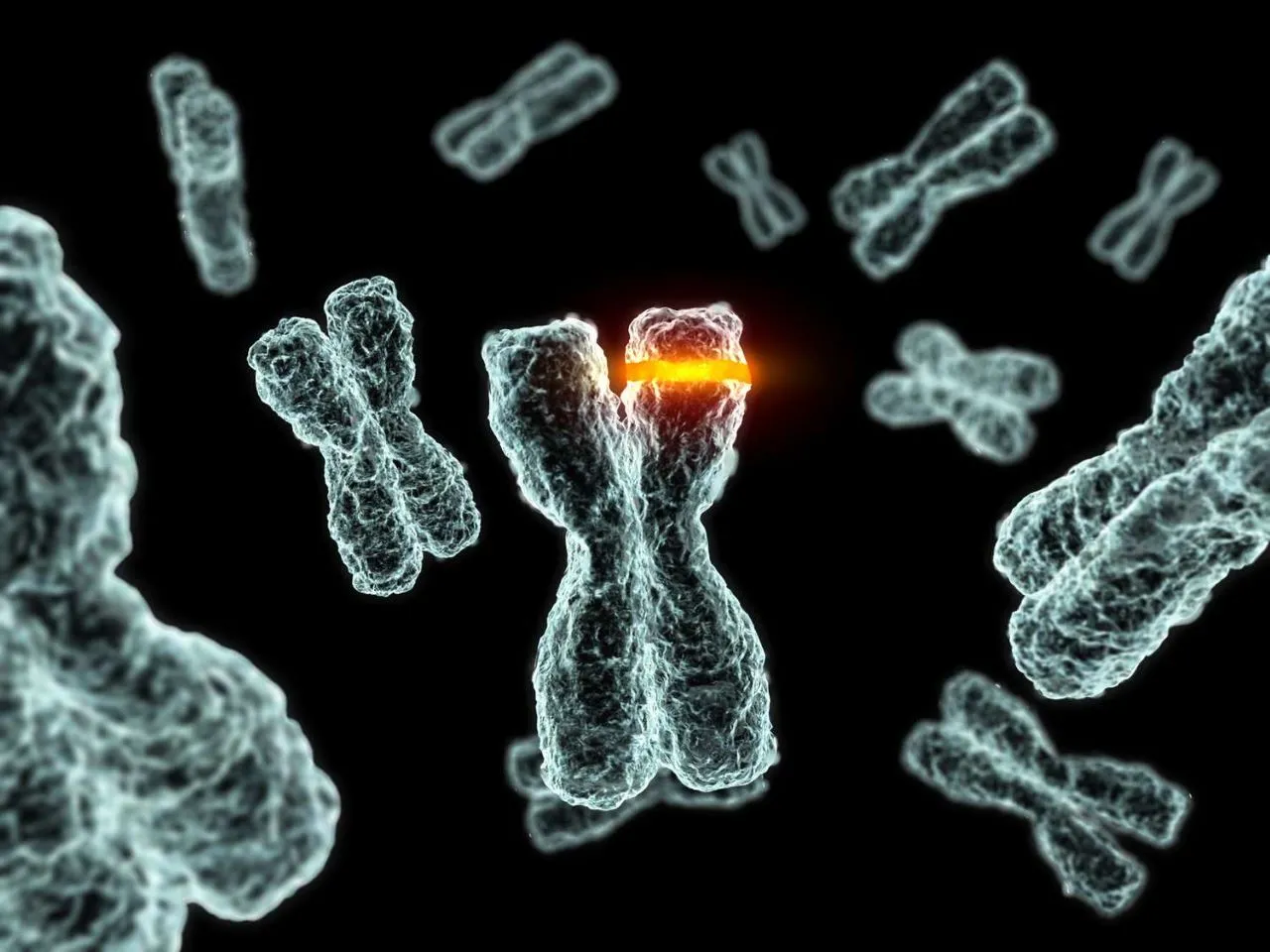What Does Hetero Mean In Science? A Detailed Look
The prefix ‘hetero-‘ is commonly used in scientific terminology to indicate difference, diversity, or variation. If you’re short on time, here’s a quick answer: In science, hetero refers to something being ‘different’ or ‘other’.
In this comprehensive guide, we’ll explore the diverse meanings and applications of the hetero prefix across major branches of science. We’ll look at how it denotes difference in chemistry and biology, how it signifies variation in physics and geology, and examine other scientific uses and connotations.
Hetero in Chemistry
When it comes to chemistry, the term “hetero” refers to the presence of different elements or materials within a molecule or structure. This prefix is derived from the Greek word “heteros,” which means “different” or “other.”
In the world of chemistry, there are several key concepts where the term “hetero” is used to describe various phenomena. Let’s take a closer look at three of these: heteroatom, heterogeneous, and heterostructure.
Heteroatom – Different Element in a Molecule
In chemistry, a heteroatom refers to an atom that is different from the rest of the atoms in a molecule. These atoms can be easily identified as they are not carbon or hydrogen atoms, which are commonly found in organic compounds.
Heteroatoms can include elements such as nitrogen, oxygen, sulfur, and phosphorus, among others. The presence of heteroatoms in a molecule can greatly influence its chemical properties and reactivity. For example, nitrogen-containing heteroatoms are often found in pharmaceutical compounds, playing a crucial role in their biological activity.
Heterogeneous – Made up of Different Parts
The term “heterogeneous” is used to describe a substance or system that is made up of different parts or components. In chemistry, this refers to a mixture that is not uniform throughout, where the different substances are visibly distinct or separated.
Heterogeneous mixtures can be solid, liquid, or gas, and examples include oil and water, sand and gravel, or a mixture of gases. These mixtures often exhibit different properties depending on the composition and distribution of their components.
Understanding heterogeneous systems is essential in various fields, such as materials science, environmental chemistry, and industrial processes.
Heterostructure – Layers of Different Materials
A heterostructure is a specialized term used in materials science and nanotechnology to describe a structure composed of layers made of different materials. These structures are created by depositing or growing layers of different materials on top of each other, forming interfaces between them.
Heterostructures are widely studied for their unique electronic, optical, and magnetic properties, which can be utilized in various applications, including semiconductors, solar cells, and electronic devices.
Understanding the design and properties of heterostructures is crucial for developing advanced materials with enhanced functionalities.
For a more in-depth understanding of the concepts discussed above, you can refer to reputable scientific sources such as American Chemical Society (ACS) or International Union of Pure and Applied Chemistry (IUPAC) websites.
These sources provide comprehensive information and research articles on various aspects of chemistry, including the significance of heteroatoms, heterogeneous mixtures, and heterostructures in scientific studies and applications.
Hetero in Biology
In the field of biology, the term “hetero” is used to describe various aspects of genetic and cellular diversity. It encompasses the concept of differences and variations within a species, which play a crucial role in the development and functioning of living organisms.
Let’s delve deeper into three key areas where the term “hetero” is commonly used in biology.
Heterotroph – Obtains Nutrition Differently
When we talk about heterotrophs, we refer to organisms that obtain their nutrition in a different way compared to autotrophs. Autotrophs, such as plants, can synthesize their own food through photosynthesis.
On the other hand, heterotrophs cannot produce their own food and rely on consuming other organisms or organic matter for sustenance. This diverse group includes animals, fungi, and many microorganisms.
Heterotrophs play a vital role in the ecosystem by breaking down organic material and recycling nutrients, contributing to the overall balance of nature.
Heterosis – Hybrid Vigor from Genetic Differences
Heterosis, also known as hybrid vigor, is a phenomenon observed when offspring of two genetically different individuals exhibit superior traits compared to their parents. This occurs due to the combination of diverse genetic material, resulting in increased fitness and performance.
Heterosis is often exploited in agriculture and animal breeding, where crossbreeding is used to enhance desirable traits such as yield, disease resistance, and overall vitality. The understanding of heterosis has significantly contributed to advancements in crop production and livestock breeding, leading to improved food security and economic benefits.
Heterogeneous Nucleus – Genetically Distinct Cells
Within multicellular organisms, the presence of a heterogeneous nucleus refers to the existence of genetically distinct cells within the same organism. This diversity arises due to mutations, genetic recombination, and other factors that result in variations in the genetic material of individual cells.
Heterogeneous nuclei can be found in tissues and organs, allowing for specialized functions and adaptations. For example, in the immune system, the presence of diverse immune cells with unique genetic characteristics enables a more effective defense against pathogens.
Understanding the heterogeneity of nuclei has become crucial in fields such as cancer research, where genetic differences between cells play a role in tumor development and progression.
Exploring the different facets of “hetero” in biology reveals the fascinating ways in which genetic and cellular diversity impact the functioning and evolution of living organisms. These concepts highlight the importance of embracing and understanding differences to unlock the full potential of the natural world.
Hetero in Physics
Heterojunction – Interface Between Dissimilar Semiconductors
In the field of physics, hetero refers to the concept of heterojunction, which is the interface between two different types of semiconductors. A heterojunction is formed when two materials with different band gaps are brought together, creating an electronic junction.
This junction plays a crucial role in various electronic devices such as transistors, solar cells, and light-emitting diodes (LEDs).
Heterojunctions are utilized to enhance the performance of these devices by allowing the control of electron and hole behavior at the interface. The different band gaps of the materials in a heterojunction result in a built-in potential barrier, which enables the selective movement of charge carriers.
This controlled movement of electrons and holes is essential for the efficient functioning of electronic devices.
For example, in a transistor, the heterojunction between the base and the collector regions allows for the modulation of current flow, enabling the amplification of signals. Similarly, in a solar cell, the heterojunction between the p-type and n-type semiconductors facilitates the separation of photogenerated electron-hole pairs, leading to the generation of electrical energy.
Understanding and manipulating heterojunctions is crucial for advancing semiconductor technology and developing new and improved electronic devices. Scientists and engineers continue to explore innovative ways to optimize heterojunctions, leading to advancements in energy efficiency, device miniaturization, and overall performance.
Heterodyne – Signals with Different Frequencies Mixed
Another aspect of hetero in physics is heterodyne, which refers to the mixing of signals with different frequencies. Heterodyning is a technique used in various applications, including radio communication, radar systems, and audio processing.
When two signals with different frequencies are mixed, they produce a new signal that contains the sum and difference of the original frequencies. This process is utilized in radio receivers to convert incoming radio signals to a lower frequency, known as the intermediate frequency (IF).
This frequency conversion allows for easier amplification and demodulation of the signal.
Heterodyning is also used in radar systems to detect and measure the distance of objects. By mixing the transmitted radar signal with the reflected signal from the target object, a new signal is generated that contains information about the distance and velocity of the object.
In audio processing, heterodyning is used to create effects such as tremolo and vibrato. By mixing an audio signal with a low-frequency oscillator signal, the resulting signal exhibits a fluctuation in volume or pitch, adding depth and character to the sound.
Other Scientific Uses of Hetero
Heterogeneity in Geology – Compositionally Diverse
Hetero, in the context of geology, refers to heterogeneity. Heterogeneity is a term used to describe the compositionally diverse nature of rocks, minerals, and other geological materials. It signifies that these materials are made up of different components or have variations in their physical properties.
For example, a heterogeneous rock may contain different minerals or exhibit varying textures throughout its structure. This diversity plays a crucial role in understanding the formation and behavior of different geological formations.
Heterochromatin in Biology – Genetically Inactive Chromatin
In biology, hetero is often used to denote heterochromatin. Heterochromatin refers to a specific type of chromatin, which is the complex of DNA and proteins that make up chromosomes. Unlike euchromatin, which is genetically active, heterochromatin is genetically inactive.
It contains highly condensed DNA that is tightly packed and inaccessible for gene expression. Heterochromatin plays a vital role in regulating gene expression, maintaining genome stability, and protecting the integrity of the genetic material.
Heteroscedasticity in Statistics – Unequal Variances
Heteroscedasticity is a statistical term that describes the phenomenon of unequal variances in a dataset. It refers to a situation where the spread or variability of the data points differs across different levels or groups of the independent variable.
This can have an impact on statistical analyses, such as regression models, as it violates the assumption of constant variance. Detecting and addressing heteroscedasticity is important to ensure the validity of statistical inferences and to avoid biased results.
For more information on heteroscedasticity in statistics, you can visit StatsModels.
Conclusion
In summary, across the natural sciences, the prefix hetero- is used to characterize phenomena that are distinct, diverse, mixed, or displaying variability. It appears in concepts from chemistry, biology, physics, geology, and beyond.
While its exact meaning depends on context, hetero broadly signifies difference, contrast, heterogeneity, and diversity in scientific terminology.







